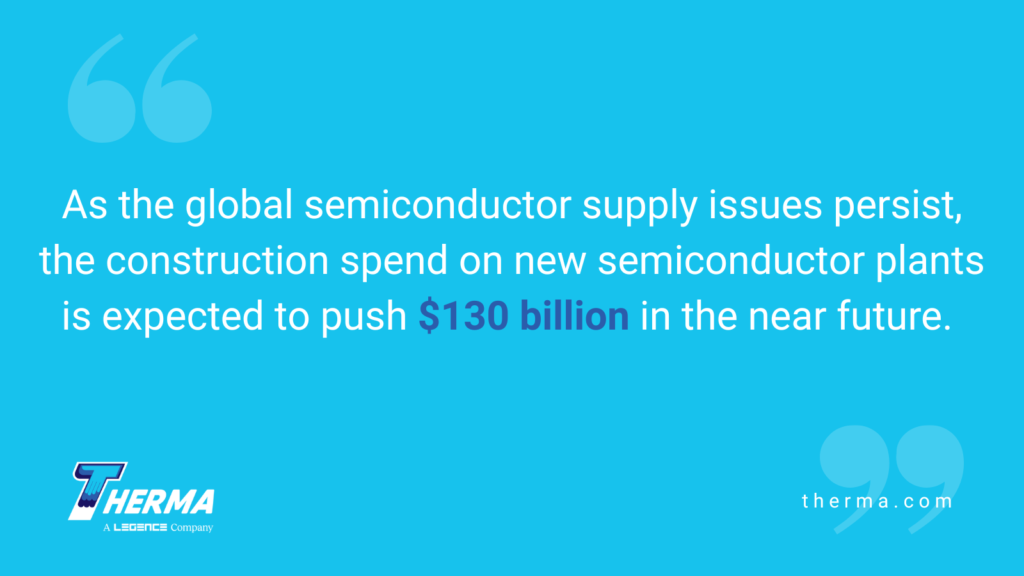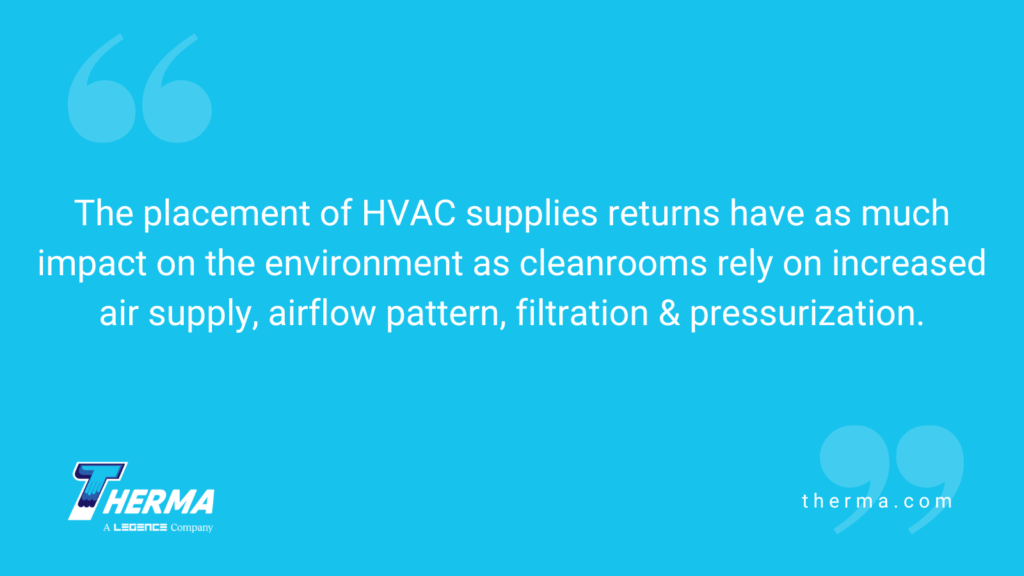by Ali Kriscenski
Semiconductor manufacturing plays a central role in most consumer goods produced today. Semiconductors are found in appliances, building automation systems, motor vehicles, computers, smart phones, ATMs, transit devices, televisions and medical devices, among other applications. Semiconductor manufacturing is in high demand, and facilities looking to expand capacity can use this article as a reference for construction requirements.
What Is a Semiconductor?
Nearly everyone is aware of the semiconductor shortage, but not everyone may be familiar with what semiconductors are or what functions they serve. Semiconductors are devices typically made from silicon, and other elements. As a metalloid, silicon has properties of both metals and nonmetals. As a semiconductor, silicon is used in semiconductor chips along with transistors and wiring to create circuits for electrical devices. The semiconductor controls and manages the flow of electrical current to run equipment and devices.
What Semiconductor Production Entails
The scale of semiconductors for today’s electronics makes them a precision device. The manufacturing process includes hundreds of steps to combine the elements — such as silicone — with the wiring, transistors, coatings and treatments — and with consistency for mass production. The margin for error is minute and the processes involved with each step have specialized condition requirements.
Semiconductor manufacturing facilities are cleanrooms set up to carefully protect the chips (or wafers) from damage or contaminants. The chips can be designed with 100s of layers, each set with precision to the nanometer in order to interact with the layers above and below. As semiconductor manufacturing can take months from start to finish, the concept of “cleanroom” is paramount to success. Any dust or particles could jeopardize the final product’s quality, making semiconductor labs “zero dust” facilities.
Construction Considerations for Semiconductor Manufacturing
The requirements for semiconductor manufacturing make any construction or fit out efforts dependent on the level of indoor environmental quality (IEQ) that can be achieved. Most chipmakers have ISO class 1 cleanrooms — the cleanest cleanrooms. These spaces require optimal HVAC system design and operations in order to maintain processing activities.
The construction of cleanrooms requires careful coordination between all trades as it involves HVAC design, lighting/lighting controls, glazing and doors, finishes and structural elements. With cleanroom design, the placement of HVAC supplies and returns have as much impact on the environment as cleanrooms rely on increased air supply, airflow pattern, filtration and pressurization.
Semiconductor processing often utilizes robotics to move the chips along the many steps of processing and eliminate human error. These electronics require intricate electrical controls that are reliable, safe and meet the cleanroom standards. These laboratories for semiconductor manufacturing have temperature and humidity requirements for the production process and for the finishes and equipment housed within.
Making Capital Investments With Confidence
As the global semiconductor supply issues persist, the construction spend on new semiconductor plants is expected to push $130 billion in the near future. The valuation reflects the complexity and costs associated with semiconductor manufacturing. The high market demand for semiconductors makes the construction process critical to meeting business targets for facilities to come online.
A holistic approach to HVAC systems design that is coordinated with mechanical, electrical and plumbing (MEP), structural and other early construction processes is crucial to creating the proper environment for semiconductor manufacturing. The large capital investments that cleanroom production facilities demand trusted expertise that can help clients evaluate, design, build and service the custom HVAC systems and components. In a market with tremendous growth opportunities, the right technical partner can deliver timely solutions that drive your business capabilities forward.
Contact a Therma HVAC Expert today!
Ali Kriscenski was trained in high-performance building design at Boston Architectural College. She has worked with leading architecture and construction firms in NYC and New England and served on the executive team at the Forest Stewardship Council International. She was the managing editor at Inhabitat and has worked pro bono for the Green Building Institute, ISEAL Alliance and Habitat for Humanity.
Sources
Venture Beat – Deloitte: The end of the semiconductor shortage is near
Cleanroom Technology – Vision 2022: new year, new cleanroom









